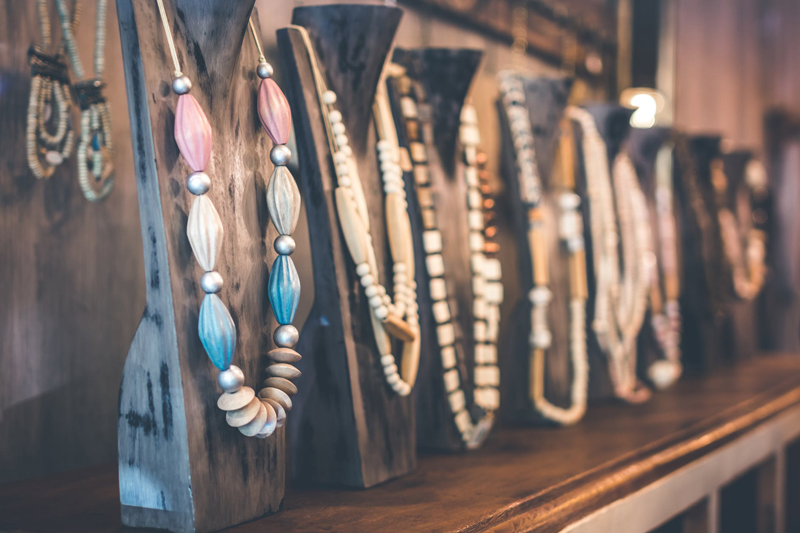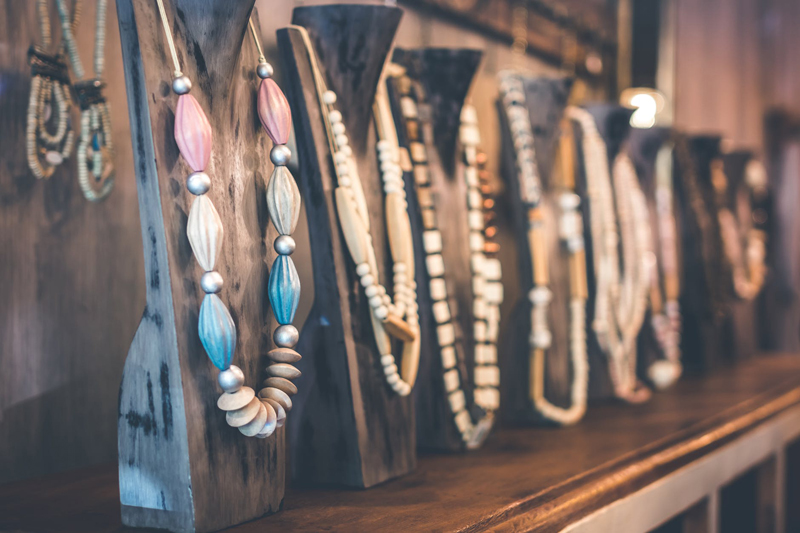Labeling Jewelry Made in USA

 If you live in the United States and make and sell jewelry, you may have wondered if you should label it "Made in America" or "Made in USA" to help distinguish it from cheaply-made imports. American-made products are gaining popularity with U.S. consumers in light of recent quality problems with imported goods. But under federal law, making your jewelry in the United States is not necessarily enough to qualify you to describe it that way.
If you live in the United States and make and sell jewelry, you may have wondered if you should label it "Made in America" or "Made in USA" to help distinguish it from cheaply-made imports. American-made products are gaining popularity with U.S. consumers in light of recent quality problems with imported goods. But under federal law, making your jewelry in the United States is not necessarily enough to qualify you to describe it that way.
The FTC's Made in USA Policy
The Federal Trade Commission (FTC) regulates the use of "Made in USA" labels on products and advertising. Under the FTC Act, it is illegal to make a Made in USA claim about a product unless it is "all or virtually all" made in America. This means that not only must the final product be made in the United States, but "all or virtually all" of its components must be, too. According to the FTC, that "means that all significant parts and processing that go into the product must be of U.S. origin. That is, the product should contain no — or negligible — foreign content."
That's a little troubling for most of us who make jewelry using pre-made findings and beads, which tend to be imported. Even if you fabricate jewelry completely from sheet metal or wire, some or all of it may have been mined or processed in another country. However, even if your jewelry contains foreign components, you might still be able to market it as made in America - as long as you carefully comply with the FTC's rules.
The first question the FTC asks when determining whether a product is truly American made is whether its "final assembly or processing" occurred in the United States. If you personally make jewelry in a state or territory of the Unites States, then it probably passes this first test.
Next, the FTC requires that no "significant part of the final product" be of foreign origin. Your bead store or supplier should be able to tell you where their components are from. Obviously, if all of your components are originally from the United States, then you have no problem. On the other hand, if all of your components are imported, then it's probably not legal for you to make an "unqualified" Made in USA claim. (We'll talk about "qualified versus unqualified" in a moment.)
What if your jewelry is made from both American and foreign-made components? This is when you need to decide whether the FTC would consider the foreign components to be "significant" or "insignificant" parts of your design. The FTC provides a couple of examples of significant and insignificant parts on its website (link below), but unfortunately neither involves jewelry. Based on those examples, however, I surmise (but this is not a legal opinion) that if you made a beaded necklace from all American-made components except its two crimp beads, you probably could call the design American made. But if the necklace featured an imported pendant, then you probably shouldn't call it American made - even if the beads and other components were all manufactured in the United States.
Qualified Made in USA Claims
If you're in doubt about whether your jewelry contains "significant" foreign made parts, but you'd still like to call it American made, your safest option may be to make a qualified claim rather than an unqualified claim. An unqualified claim is one that only says "Made in USA," "Made in America," "American made," or something similar. A qualified claim contains additional information telling consumers that some components are foreign. According to the FTC, one example of a qualified claim is "Made in USA of U.S. and imported parts." As long as you're being truthful, you probably have less chance of violating the FTC rules if your claim is qualified.
Assembled in America Claims
Another option is to label your jewelry "Assembled" in American rather than "made" there. The FTC allows this kind of claim where a product's "principal assembly takes place in the U.S. and the assembly is substantial." I think this would probably apply to most handmade American jewelry, but be careful about making this claim if you use any components that themselves were handcrafted or "assembled" in another country. Also, consider how you feel about referring to your work as "assembly" from a marketing perspective. Most independent American jewelry makers consider themselves to be crafters, artisans, or artists - not merely assemblers.
How Best to Protect Yourself
The FTC is concerned about consumers being mislead or deceived, so your best bet is to be as truthful and up-front about your jewelry as possible. It is important for potential customers to know that your jewelry is handmade and not cheaply imported, but most people will not be put off by your use of some foreign components. In fact, many people actually prefer imported stones and beads because they seem more "exotic." On the other hand, customers may be afraid that imported findings and other mass-produced parts are of poor quality. You can avoid that problem by using only high-quality components (whether they're imported or not), and describing their quality accurately to your customers.
Please be aware that this article is for informational purposes only and is not a legal opinion. Always use your best reasonable judgment about how to label and describe your jewelry. The FTC, unfortunately, does not "pre-qualify" products for Made in USA status, but you can read through their entire publication on complying with the rules for further guidance:
Complying with the Made In the USA Standard (FTC)
If you have questions or comments about this topic, feel free to post them in the Jewelry Making forum.
You may also be interested in these publications, available through Amazon.com:
The Law (In Plain English) for Crafts
Your Crafts Business: A Legal Guide
Chris Franchetti Michaels is a writer and jewelry artisan specializing in beaded designs, wire work, and metal fabrication. She is the author of the books Teach Yourself Visually: Jewelry Making and Beading, Beading Quick Tips, and Wire Jewelry Quick Tips. Visit her website BeadJewelry.net for more jewelry-making help and inspiration.
You Should Also Read:
Marketing and Selling Your Handmade Jewelry - Book Review
Ultimate Guide to Your Profitable Jewelry Booth - eBook Review

Related Articles
Editor's Picks Articles
Top Ten Articles
Previous Features
Site Map
Content copyright © 2023 by Chris Franchetti Michaels. All rights reserved.
This content was written by Chris Franchetti Michaels. If you wish to use this content in any manner, you need written permission. Contact Susan Mendenhall for details.





